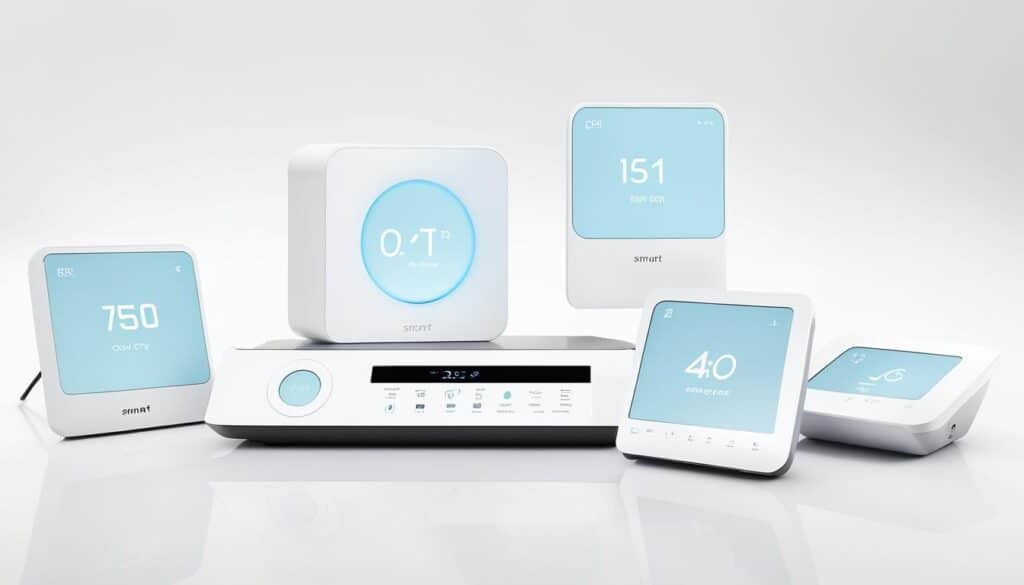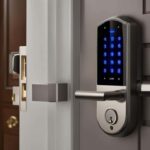Welcome to the world of smart home networking! If you’re a newcomer looking to transform your home into a connected haven of convenience and automation, you’re in the right place. In this article, I will guide you through the essential tips and tricks for setting up a smart home network and help you make the most of its incredible capabilities.
Smart home networking is all about bringing together various devices and appliances within your home, allowing you to control them from a centralized system. Imagine being able to adjust the thermostat, turn off the lights, or even feed your pet, all with a few taps on your smartphone or a simple voice command. With the Internet of Things (IoT) revolution, this is now a reality.
But where do you begin? Don’t worry, I’ll walk you through it step by step. From understanding the different types of devices and their connectivity requirements to choosing the right equipment and setting up a secure network, we’ll cover it all. And if you ever run into any issues, I’ll guide you on troubleshooting and managing your network effectively.
Table of Contents
Key Takeaways:
- Smart home networking allows you to control and automate your devices and appliances.
- The Internet of Things (IoT) is the central system that connects all your devices.
- Understanding device compatibility and connectivity requirements is crucial.
- Choosing the right networking equipment, such as routers and hubs, is essential for a reliable network.
- Securing your smart home network with strong passwords and firmware updates is vital for protecting against cyber threats.
Understanding Smart Home Networking
Smart home networking is at the forefront of the rapidly growing field of the Internet of Things (IoT), where devices and appliances within a home are interconnected through a centralized system. This connectivity allows for seamless control and automation, giving users the ability to manage their homes through smartphone apps or voice assistants. To establish a reliable and secure network, it is crucial to understand the different types of devices and their connectivity requirements.
At the heart of a smart home network is the Internet of Things (IoT), which encompasses a vast array of devices, from thermostats and lighting systems to security cameras and smart locks. These devices are designed to connect to a centralized hub or router, creating a network that can be accessed and controlled remotely.
One of the key benefits of smart home networking is the ability to integrate various devices and enable them to work together harmoniously. For example, you can set up a smart lighting system that automatically turns on when you enter a room, adjusts brightness based on the time of day, and can even sync with your alarm system for added security.
When it comes to connectivity, smart home devices typically use Wi-Fi, Bluetooth, or Zigbee protocols to communicate with each other and the centralized hub. Wi-Fi is the most common and versatile option, offering high-speed internet access and compatibility with a wide range of devices. Bluetooth is ideal for short-range connections, such as controlling speakers or streaming music, while Zigbee is specifically designed for low-power devices, like sensors and smart locks.
https://www.youtube.com/watch?v=xykFaoOSREg
Benefits of Smart Home Networking:
- Convenience: Smart home networking allows you to control and automate various aspects of your home with ease. Whether it’s adjusting the thermostat, turning off lights, or setting up routines, all it takes is a few taps on your smartphone.
- Energy Efficiency: By integrating smart devices, you can optimize energy usage in your home. Smart thermostats, for example, can learn your habits and adjust the temperature accordingly, helping you save on utility bills.
- Security: Smart home networks offer enhanced security features, such as remote monitoring and real-time alerts. With smart cameras and doorbell cameras, you can keep an eye on your home from anywhere and receive notifications if any unusual activity is detected.
- Entertainment: Smart home networking extends beyond practicality and security. You can create a truly immersive entertainment experience by connecting speakers, TVs, and streaming devices, allowing for seamless audio and video playback throughout your home.
Understanding the basics of smart home networking is essential for anyone looking to embrace the convenience and automation it offers. By familiarizing yourself with the different types of devices and their connectivity requirements, you can build a reliable and secure network that elevates your home’s functionality and comfort.
Choosing the Right Smart Home Networking Equipment
When building a smart home network, selecting the right equipment is crucial. The key components include a high-quality router, a hub or smart home controller, and potentially a mesh Wi-Fi system for larger homes. Consideration should be given to factors such as compatibility, range, and speed to ensure optimal performance and functionality.
An important first step is choosing a reliable and powerful router. The router serves as the gateway between your smart devices and the internet, so it is essential to invest in a high-quality model that can handle the demands of a connected home. Look for routers that support the latest Wi-Fi standards, such as Wi-Fi 5 (802.11ac) or Wi-Fi 6 (802.11ax), for fast and reliable connections throughout your home.
Additionally, a hub or smart home controller is essential for centralizing and managing your smart devices. This device acts as a command center, allowing you to control and automate various aspects of your home, such as lighting, security systems, and entertainment devices. Ensure that the hub or controller is compatible with the devices you plan to connect and supports the necessary communication protocols, such as Zigbee or Z-Wave.
For larger homes or areas with Wi-Fi dead zones, a mesh Wi-Fi system can provide seamless coverage. A mesh system consists of multiple nodes placed strategically throughout the home, creating a network of interconnected access points. This ensures a strong and consistent Wi-Fi signal in every corner of your house, eliminating dead spots and improving overall network performance.
In summary, when choosing smart home networking equipment, prioritize the following:
- Invest in a high-quality router that supports the latest Wi-Fi standards
- Select a hub or smart home controller compatible with your devices and communication protocols
- Consider a mesh Wi-Fi system for larger homes to ensure comprehensive coverage
By selecting the right equipment, you can create a robust and reliable smart home network that enhances your daily life.

Setting Up a Secure Smart Home Network
When it comes to setting up a smart home network, security should always be a top priority. Protecting your network and devices from potential cyber threats is essential for a safe and seamless smart home experience. Here are some key steps you can take to ensure the security of your smart home network:
- Secure Your Wi-Fi Network: The first step in securing your smart home network is to set up a strong password for your Wi-Fi network. Avoid using generic or easily guessable passwords, and opt for a combination of letters, numbers, and special characters. This will help prevent unauthorized access to your network.
- Enable Encryption: Enable encryption protocols such as Wi-Fi Protected Access 2 (WPA2) or the latest WPA3 to encrypt the data transmitted between your devices and the router. Encryption adds an extra layer of security and safeguards your network from eavesdropping and unauthorized data interception.
- Regularly Update Firmware: Keep your smart home devices’ firmware up to date by regularly checking for and applying firmware updates. Firmware updates often include security patches that address known vulnerabilities and protect against potential cyber attacks.
- Unique Passwords for Each Device: It’s crucial to use strong, unique passwords for each smart home device connected to your network. Avoid using the same password for multiple devices, as this can increase the risk of a security breach across your entire network.
To summarize, securing your smart home network involves setting up a strong Wi-Fi password, enabling encryption protocols, regularly updating firmware, and using unique passwords for each device. By following these steps, you can enhance the security of your smart home network and protect against potential cyber threats.
Managing and Troubleshooting Smart Home Networks
When it comes to managing a smart home network, there are a few key aspects to consider. Ensuring device compatibility, managing network congestion, and troubleshooting any issues that may arise are all important for a smooth and uninterrupted user experience.
To begin with, it’s crucial to keep your firmware and software up to date. Manufacturers often release updates that address security vulnerabilities, introduce new features, and improve overall performance. By regularly checking for and installing these updates, you can ensure that your smart home network remains secure and optimized.
Another factor to consider is device compatibility. With various brands and models on the market, it’s important to choose devices that are compatible with your smart home network. This will ensure proper communication and integration between all your devices, avoiding any connectivity issues or limitations.
Network congestion can also be a common issue in smart home networks, especially in larger households with multiple devices connected simultaneously. To manage this, consider using a mesh Wi-Fi system that extends the coverage and distributes the network load more efficiently. This can help alleviate congestion and provide a stable connection throughout your home.
Troubleshooting Smart Home Network Issues
Despite taking precautions, it’s possible to encounter issues with your smart home network. Here are some troubleshooting tips to help you address common problems:
- Restart your devices: Sometimes a simple restart can resolve connectivity issues. Turn off and unplug your devices, wait for a few seconds, and then plug them back in.
- Check Wi-Fi signal strength: Poor Wi-Fi signal can cause devices to disconnect or perform poorly. Ensure that your router is centrally located and not obstructed by objects that can interfere with the signal.
- Review device settings: Double-check the settings of your devices, such as Wi-Fi passwords and network configurations. Make sure they are correctly entered and match the settings of your smart home network.
- Perform a network reset: If you’re experiencing persistent issues, performing a network reset can help. Refer to your device manuals for instructions on how to reset your network and reconfigure the settings.
Remember, troubleshooting can sometimes be a trial-and-error process, but with patience and persistence, you can overcome any challenges that arise in managing your smart home network.

Conclusion
Smart home networking provides an array of benefits and conveniences for newcomers. By delving into the basics of smart home networking, carefully selecting the right equipment, prioritizing security, and effectively managing and troubleshooting their network, users can maximize their smart home experience. These essential tips and tricks will simplify your tech life, allowing you to fully enjoy the advantages of a smart home network.
FAQ
What is smart home networking?
Smart home networking refers to the connection of various devices and appliances within a home to a centralized system, often referred to as the Internet of Things (IoT). This allows for seamless control and automation through the use of smartphone apps or voice assistants.
What are the key components of a smart home network?
The key components include a high-quality router, a hub or smart home controller, and potentially a mesh Wi-Fi system for large homes. It is essential to consider factors such as compatibility, range, and speed when selecting these devices.
How can I secure my smart home network?
To secure your smart home network, you should secure your Wi-Fi network with a strong password and enable encryption protocols. It is also important to regularly update the firmware of your devices and use strong, unique passwords for each device to enhance network security and protect against potential cyber threats.
How can I manage and troubleshoot my smart home network?
Managing and troubleshooting a smart home network involves ensuring device compatibility, managing network congestion, and diagnosing and resolving any issues that may arise. It is important to keep firmware and software up to date, periodically check device compatibility, and diagnose and resolve network-related problems to ensure a smooth and uninterrupted user experience.
How can smart home networking benefit newcomers?
Smart home networking offers a world of convenience and automation to newcomers. By understanding the basics, choosing the right equipment, prioritizing security, and effectively managing and troubleshooting the network, users can make the most of their smart home experience.


